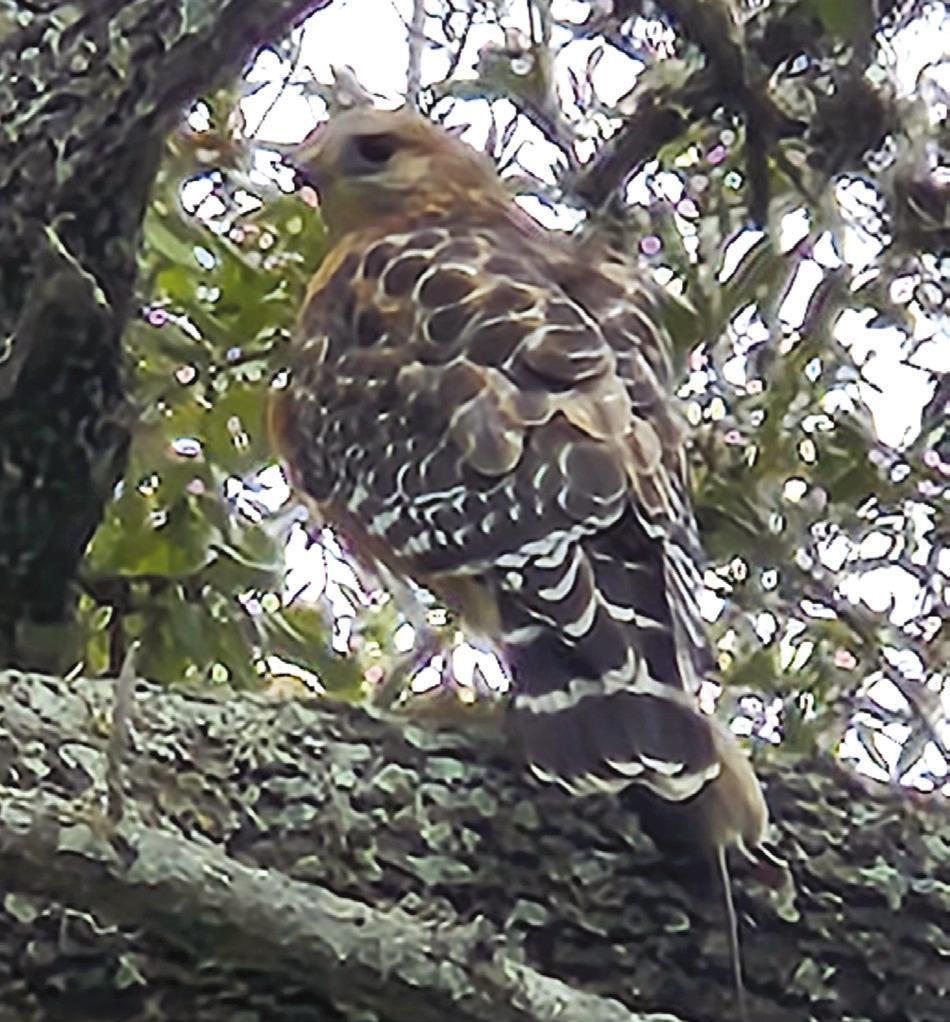
A red-shouldered hawk perches on a branch in City Park with a field mouse in its talons.
Photo by Celeste Cook

Exploring Nature: Red-Shouldered Hawk
A friend recently sent me a photo of a hawk which had perched in a tree in her yard. It was a handsome specimen, with light rufous shoulders, or upper-wing coverts, to be precise. It also had reddish barring on the chest and belly.
It was a red-shouldered hawk, a year-round resident in our area and the most brightly colored hawk we have.
I researched this medium- sized hawk, whose Latin name is buteo lineatus, and discovered it is noticeably smaller than a red-tailed hawk, which is also found in Texas. An adult red-shouldered hawk has wings and tail which are boldly checkered and barred black and white, a pattern much more dramatic than most other hawks. Juvenile birds are pale, with some brown streaking on the chest but without the belly band found on adults.
Their loud call has been described as “keahh” or “kee-yur.” Blue jays can do a great job of imitating these calls, so don’t be deceived until you spot what’s making all the racket.
The red-tailed hawk is more common throughout North America, but in our part of the country, red-shoulders are much more numerous and likely.
Red-shouldered hawks mostly hunt from perches and attack all sorts of prey, especially reptiles, amphibians and small mammals. They will also eat insects and earthworms — and as a last resort, carrion such as squashed roadkill. In winter, look for them perched on low to medium heights on sunny edges.
Oddly, one of this hawk’s main enemies is another bird. Great horned owls can kill and eat both nestlings and adult hawks.
Red-shouldered hawks were adversely affected, like most birds, by DDT in the 1960s, but they have come back nicely since that pesticide was banned. Today, their population is considered stable in most areas, including ours.
Keep an eye out and you may see this raptor as it becomes increasingly at home in suburban locales in our area. Or, since it is such a noisy bird, listen for its loud calls.











